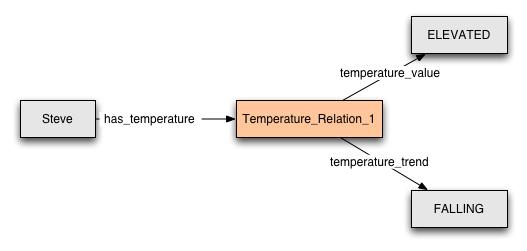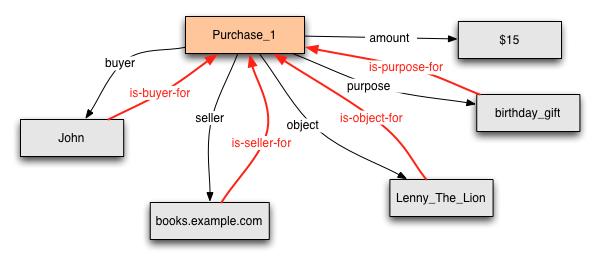I split this out as a separate thread. (01) One thing that is very ambiguous about the use of the concept maps and OWL is the exact nature of several of the relationships. (02) Given the attached diagram entitled "temperature-example", there are several questions that are unanswered. I find the whole set of examples flawed. (03) Steve has a temperature? No - that is wrong! Yes - Steve has a temperature, however we cannot ever be sure what it is. A much more accurate statement is that Steve was associated with an event where someone (part of an agency) measured his temperature. They did this using a procedure (tested it with a thermometer stuffed under his tongue for 30 seconds), possibly an instrument (type and brand of thermometer) and it was conducted at some geo-spatial coordinates. The example given is worthless if you get more than one declaration since you would need the extra information to determine which set of information is more accurate a current. How can you say he has a trend without knowing the time attributes? Is a digital, infrared thermometer pointed at the back of Steve's throat given the same "weight" of accuracy as his mother feeling his forehead? I think not. This is almost as flawed as the Protege groups' Wine example. (04) The second diagram entitled purchase example inverse also raised some issues IMO. An inverse relationship is no where hear robust enough. The SUMO model is the one they need to consider. SUMO is the only ontology i have seen that seems to cover all the possible range of types of binary associations. It is not clear from the concept map if the relationships are able to determine simple things like is the buyer even aware of the purchase assuming the red inverse arrow was not present. The N to N relationships discussion on the other thread would encompass the nature of all relationships beyond the immediate binary predicates. Example: Is John (the Buyer) aware of the price? No one has published a convention for interpreting concept maps that clarifies this. Can OWL clarify this? Does the awareness traverse across multiple nodes? If John is the buyer role of the transaction, is he automatically aware of all the aspects of the purchase? I find it unnecessary that "birthday gift" is an aspect of the purchase concept itself. I would presume that such a reason is a factor associated only with John in his role as Buyer as a motivating factor. (05) Duane (06) _________________________________________________________________ Message Archives: http://ontolog.cim3.net/forum/ontolog-forum/ Subscribe/Unsubscribe/Config: http://ontolog.cim3.net/mailman/listinfo/ontolog-forum/ Shared Files: http://ontolog.cim3.net/file/ Community Wiki: http://ontolog.cim3.net/wiki/ To Post: mailto:ontolog-forum@xxxxxxxxxxxxxxxx (01) |

